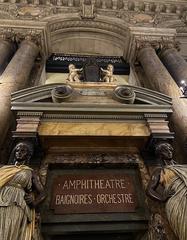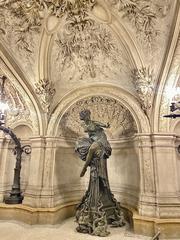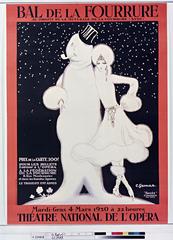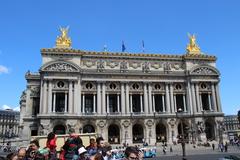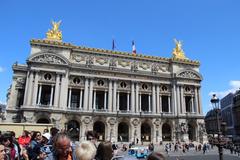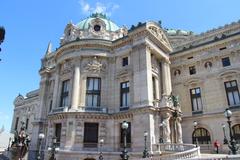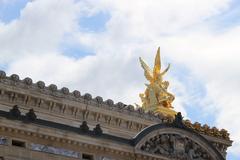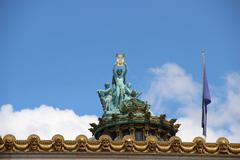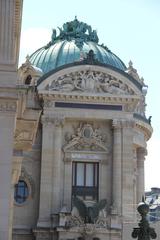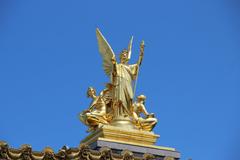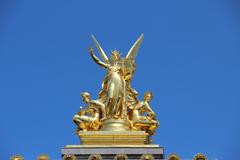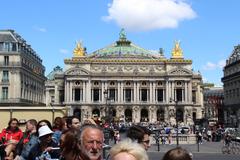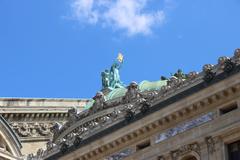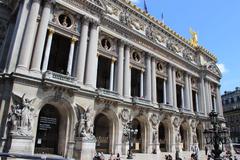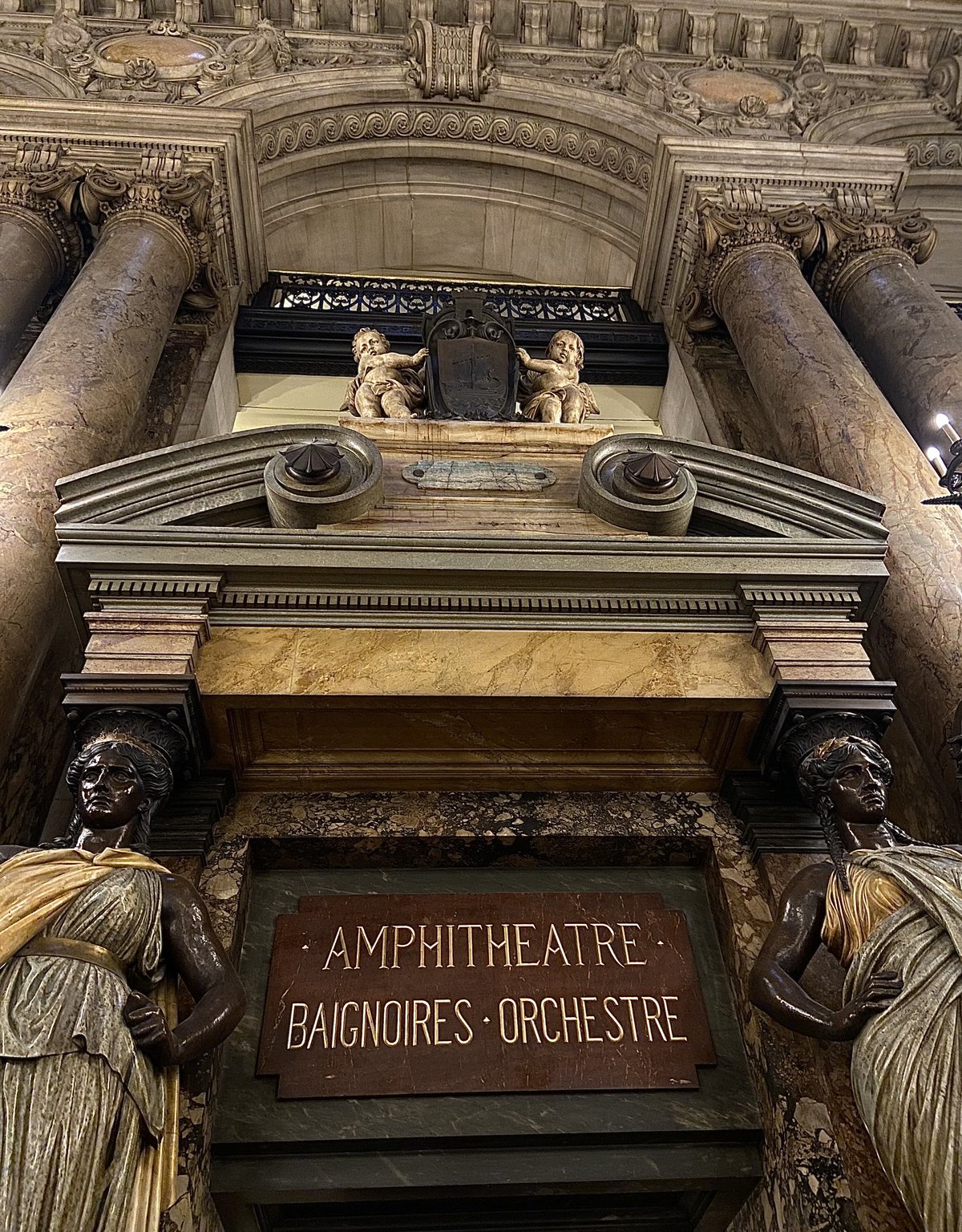
Palais Garnier Visiting Hours, Tickets, and Paris Historical Sites Guide
Date: 14/06/2025
Introduction
The Palais Garnier, also known as the Opéra Garnier, stands as one of Paris’s most iconic and opulent landmarks. This 19th-century masterpiece is admired for its Neo-Baroque and Beaux-Arts architecture, lavish interiors, and rich cultural legacy. Commissioned by Emperor Napoleon III and designed by Charles Garnier, the opera house has enchanted visitors and inspired artists, writers, and filmmakers for nearly 150 years. This comprehensive guide provides essential information on visiting hours, ticket options, accessibility, and nearby attractions, as well as a detailed look at the Palais Garnier’s history, architecture, and lasting influence.
Historical Overview
Origins and Commissioning
The vision for the Palais Garnier emerged during the Second French Empire under Napoleon III, who sought an emblem of imperial grandeur and a centerpiece for Baron Haussmann’s urban renewal of Paris (operadeparis.fr). After the previous opera house was destroyed by fire in 1873, a competition was held in 1860, attracting 171 entries. Charles Garnier, a relatively unknown architect, won the commission in 1862 (en.wikipedia.org). Garnier’s design—blending Baroque, Renaissance, and classical elements—set a new standard for theatrical buildings (palais-garnier-tickets.com).
Construction and Milestones
Construction began in 1861 and faced interruptions due to the Franco-Prussian War and the fall of the Second Empire. Technical challenges included the discovery of a subterranean lake, which later inspired The Phantom of the Opera (en.wikipedia.org). The building’s monumental proportions—over 150 meters long and 56 meters high—were made possible by innovative use of masonry and iron frameworks.
Key features include the richly decorated façade with Corinthian columns and gilded statues, and the Grand Staircase—an awe-inspiring marble ascent illuminated by a massive chandelier (vacatis.com). The auditorium, famed for its acoustics, seats nearly 2,000 and is crowned with Marc Chagall’s striking ceiling fresco (france.fr).
Inauguration and Early Years
The Palais Garnier opened on January 5, 1875, with a gala attended by European dignitaries (en.wikipedia.org). Its debut program honored both the arts and architecture, and the opera house rapidly became a hub for Parisian cultural life, hosting legendary premieres and performances (vacatis.com). The Paris Opera Ballet also made it their home.
20th-Century Transformations
The Palais Garnier underwent several renovations, including electrification in 1881 and modernization for the 1937 World’s Fair (en.wikipedia.org). In 1975, it was designated a Monument Historique and later became a UNESCO World Heritage Site (palais-garnier-tickets.com). Restoration projects in the late 20th and early 21st centuries have preserved its grandeur while introducing modern amenities.
Cultural Impact and Legacy
The opera house is indelibly linked to Gaston Leroux’s The Phantom of the Opera, which drew on the venue’s atmospheric architecture and real-life incidents, such as the chandelier accident of 1896 (en.wikipedia.org). The building’s mystique continues to inspire literature, film, and the performing arts. The Palais Garnier also houses the Bibliothèque-Musée de l’Opéra de Paris, safeguarding a wealth of archives and costumes (en.wikipedia.org).
Recent Developments and Contemporary Role
Since the opening of Opéra Bastille in 1989, the Palais Garnier has hosted mainly ballet and select opera performances (en.wikipedia.org). It remains a vibrant venue for the arts and a top Parisian tourist destination (thetouristchecklist.com), welcoming over half a million visitors annually. Recent innovations include immersive VR experiences and special exhibitions (operadeparis.fr).
Architectural Significance
Neo-Baroque and Beaux-Arts Masterpiece
The Palais Garnier epitomizes the Neo-Baroque and Beaux-Arts traditions, characterized by symmetry, monumental scale, and the integration of sculpture, painting, and decorative arts (ArchDaily). Its façade dazzles with marble, gilded bronze, and mythological figures. The building’s dome, topped by Apollo, is a Parisian icon.
Interior Splendor
- Grand Staircase: Crafted from white, red, and green marble, the Grand Staircase is a theatrical prelude to the auditorium (World of Wanderlust).
- Grand Foyer: Inspired by Versailles’ Hall of Mirrors, the Grand Foyer is adorned with gilded surfaces, chandeliers, and muraled ceilings (Opéra de Paris).
- Auditorium: Renowned for its acoustics and intimacy, the auditorium’s centerpiece is the massive chandelier beneath Chagall’s fresco (ArchDaily).
- Stage and Innovations: The stage was the largest in Europe at its completion, featuring advanced machinery and a “lake” beneath to manage groundwater (ArchDaily).
Artistic Integration
The Palais Garnier is a Gesamtkunstwerk, uniting architecture, sculpture, and painting into a single artistic whole (ArchDaily). Its décor celebrates the performing arts with allegorical figures and mythological scenes.
Global Influence
The opera’s design has inspired theaters worldwide, influencing venues like the Teatro Colón in Buenos Aires and the Tokyo Takarazuka Theater (FranceRent). Its technical and aesthetic standards set new benchmarks for performance spaces.
Cultural Resonance
The Phantom of the Opera
Gaston Leroux’s 1910 novel, Le Fantôme de l’Opéra, immortalized the Palais Garnier’s underground lake, labyrinthine corridors, and chandelier in global popular culture (France.fr). The story inspired Andrew Lloyd Webber’s enduring musical and numerous film adaptations. The real-life chandelier accident of 1896 further fueled the legend.
Film, Television, and Art
The opera’s interiors and exteriors have featured in films such as Marie Antoinette and Mission: Impossible – Fallout, and in countless documentaries (FranceRent). Marc Chagall’s 1964 ceiling fresco pays homage to music and composers, sparking admiration and debate (France.fr).
Music, Dance, and Society
Home to the Paris Opera Ballet, the Palais Garnier has shaped ballet vocabulary and social customs, including the phrase “les petits rats de l’Opéra” for young dancers. The expression “Il y a du monde au balcon” originated here, reflecting the opera’s role in Parisian society (Sortir à Paris).
Urban Legends and Anecdotes
The opera’s thirteenth-place in the sequence of Paris opera houses, the lack of a dressing room No. 13, and stories of curses and ghosts add to its mystique. The underground lake, once an engineering necessity, is now the subject of ghostly tales (France.fr).
Modern Engagement
For its 150th anniversary, the Palais Garnier offers special exhibitions, concerts, and VR experiences like “La Magie Opéra” (Sortir à Paris).
Visitor Information
Visiting Hours
- Daily: 10:00 AM to 5:00 PM (last admission at 4:30 PM)
- Check closures: Closed on certain holidays or for special events. Verify hours on the official website.
Ticketing
- Standard Admission: €15 (adults); free for children under 12 and certain groups (Vacatis).
- Guided Tours: Available in multiple languages, bookable online or on-site (Travel Yes Please).
- E-Tickets: Allow direct entry via smartphone (Palais Garnier Tickets FAQ).
- Performance Tickets: Priced separately; book early for popular shows.
Accessibility
- Elevators and ramps for reduced mobility visitors; wheelchair loans available on request.
- Accessible restrooms and seating areas (Opéra de Paris – Accessibility).
- Guide dogs permitted; special accommodations for sensory or cognitive disabilities.
Getting There
- Address: Place de l’Opéra, 9th arrondissement, Paris.
- Metro: Opéra (lines 3, 7, 8), Chaussée d’Antin (lines 7, 9), Madeleine (lines 8, 14), RER Auber.
- Nearby Attractions: Louvre Museum, Place Vendôme, Galeries Lafayette, Grands Boulevards (French and Travelers).
Practical Tips
- Book online for best prices and availability.
- Visit early or late on weekdays to avoid crowds.
- Dress smartly; formal attire is encouraged for performances.
- Allow 1.5–2 hours for your visit; longer if exploring exhibitions or dining.
- Photography: Allowed in public spaces without flash; some restrictions in the auditorium.
- Cloakroom: Large bags and suitcases not permitted.
On-Site Services
- Dining: CoCo restaurant offers lunch, dinner, and weekend brunch (Palais Garnier Tickets FAQ).
- Gift Shop: Sells books, souvenirs, and opera-related items.
- Restrooms: Including accessible facilities.
Special Experiences
- Guided tours provide deeper insight into history and architecture.
- Audio guides available for self-guided visitors.
- Interactive experiences such as VR tours or mystery games for added immersion (Vacatis).
Frequently Asked Questions (FAQ)
What are the Palais Garnier visiting hours?
Open daily 10:00 AM–5:00 PM (last admission 4:30 PM); closed on some holidays.
Is advance booking necessary?
Highly recommended, especially in peak season.
Is the Palais Garnier accessible?
Yes, with elevators, wheelchair access, and adapted services.
Can I take photos inside?
Permitted in public areas without flash; restrictions during performances.
Are guided tours available?
Yes, in English and French; self-guided tours with audio guides also offered.
How long should I plan for a visit?
1.5–2 hours is typical.
What else can I see nearby?
Louvre Museum, Place Vendôme, Galeries Lafayette.
Visuals and Media
Explore virtual tours, interactive maps, and high-quality images on the official Palais Garnier website. Suggested alt text includes “Palais Garnier grand staircase” and “Chandelier at Palais Garnier auditorium.”
Internal Links
Conclusion and Final Tips
The Palais Garnier is a dazzling testament to Paris’s artistic ambition and architectural innovation. Its blend of grandeur, history, and living tradition offers a unique visitor experience. To make the most of your visit:
- Book tickets in advance
- Arrive early or late for fewer crowds
- Plan extra time for nearby attractions
- Download the Audiala app for exclusive content, real-time updates, and audio guides.
Whether you’re captivated by its architecture, fascinated by its legends, or drawn to its performances, the Palais Garnier offers an unforgettable journey into the heart of Parisian culture.
Sources
- This is a sample text. (operadeparis.fr)
- This is a sample text. (palais-garnier-tickets.com)
- This is a sample text. (en.wikipedia.org)
- This is a sample text. (vacatis.com)
- This is a sample text. (france.fr)
- This is a sample text. (ArchDaily)
- This is a sample text. (World of Wanderlust)
- This is a sample text. (France.fr)
- This is a sample text. (Palais Garnier Tickets FAQ)
- This is a sample text. (Come to Paris Reviews)
- This is a sample text. (Sortir à Paris)
- This is a sample text. (The Tourist Checklist)
- This is a sample text. (Opéra de Paris – Accessibility)
- This is a sample text. (FranceRent)
- This is a sample text. (French and Travelers)
- This is a sample text. (Travel Yes Please)
- This is a sample text. (Destination Well Known)
- This is a sample text. (guidetourism.net)
